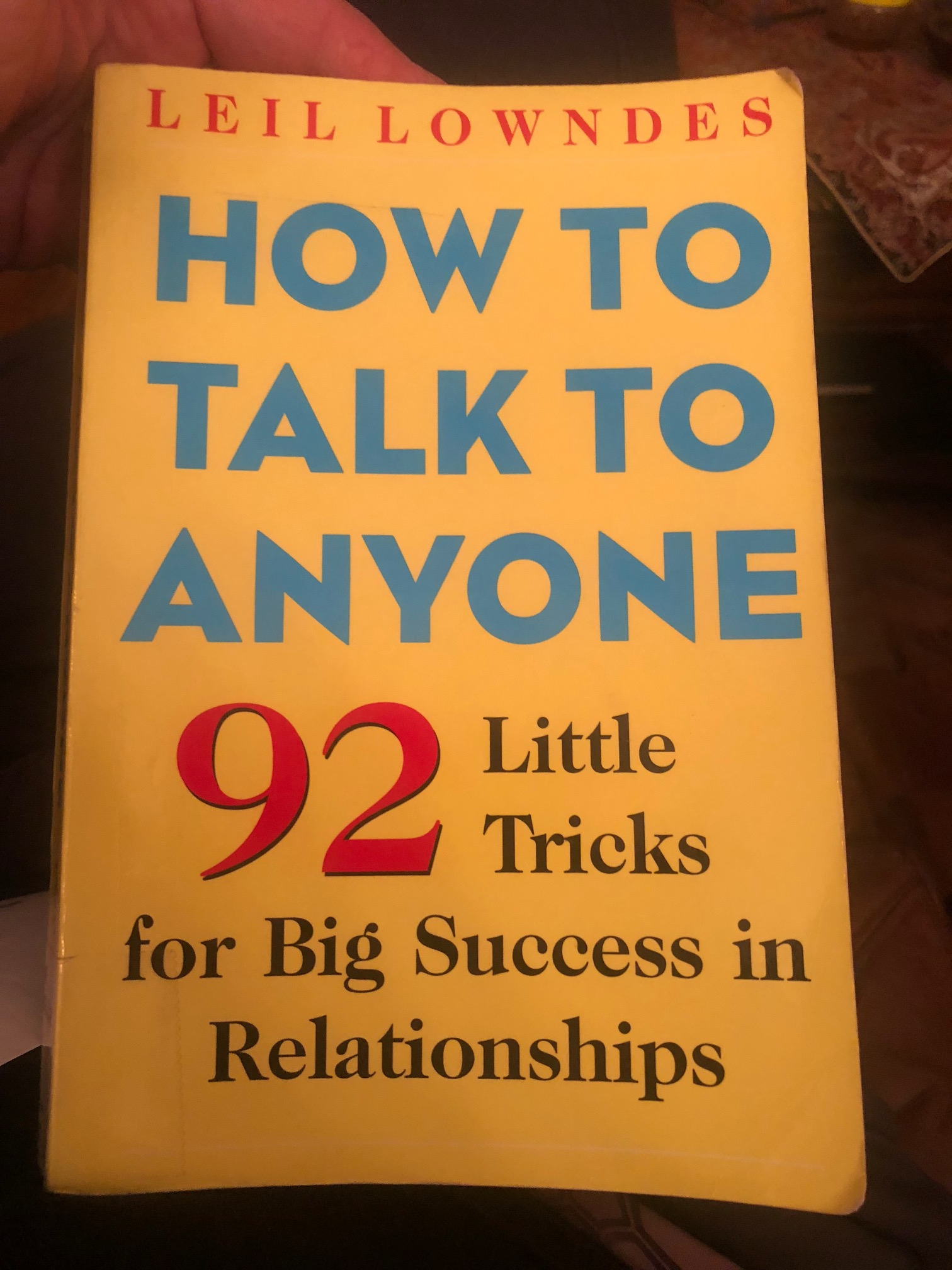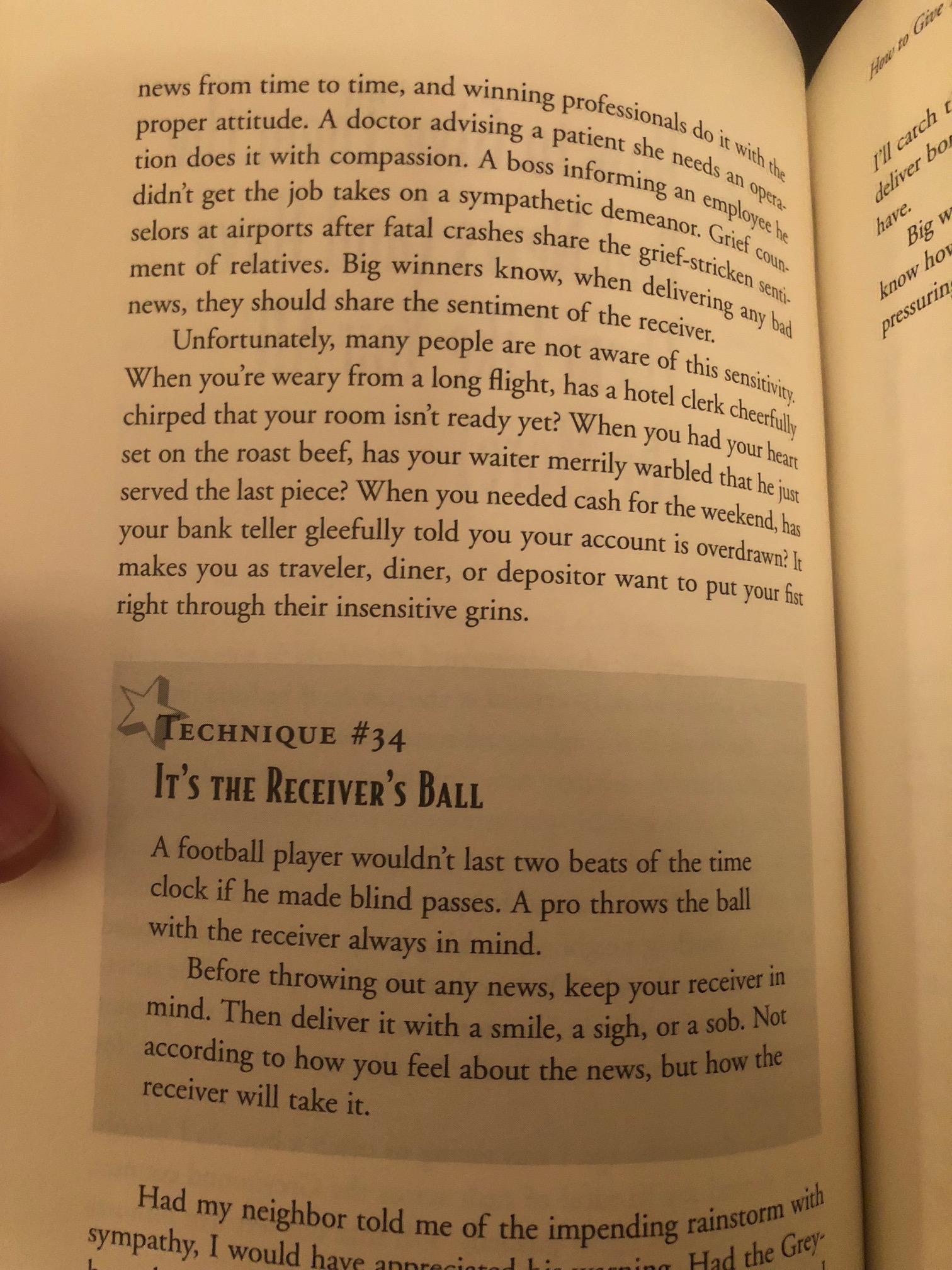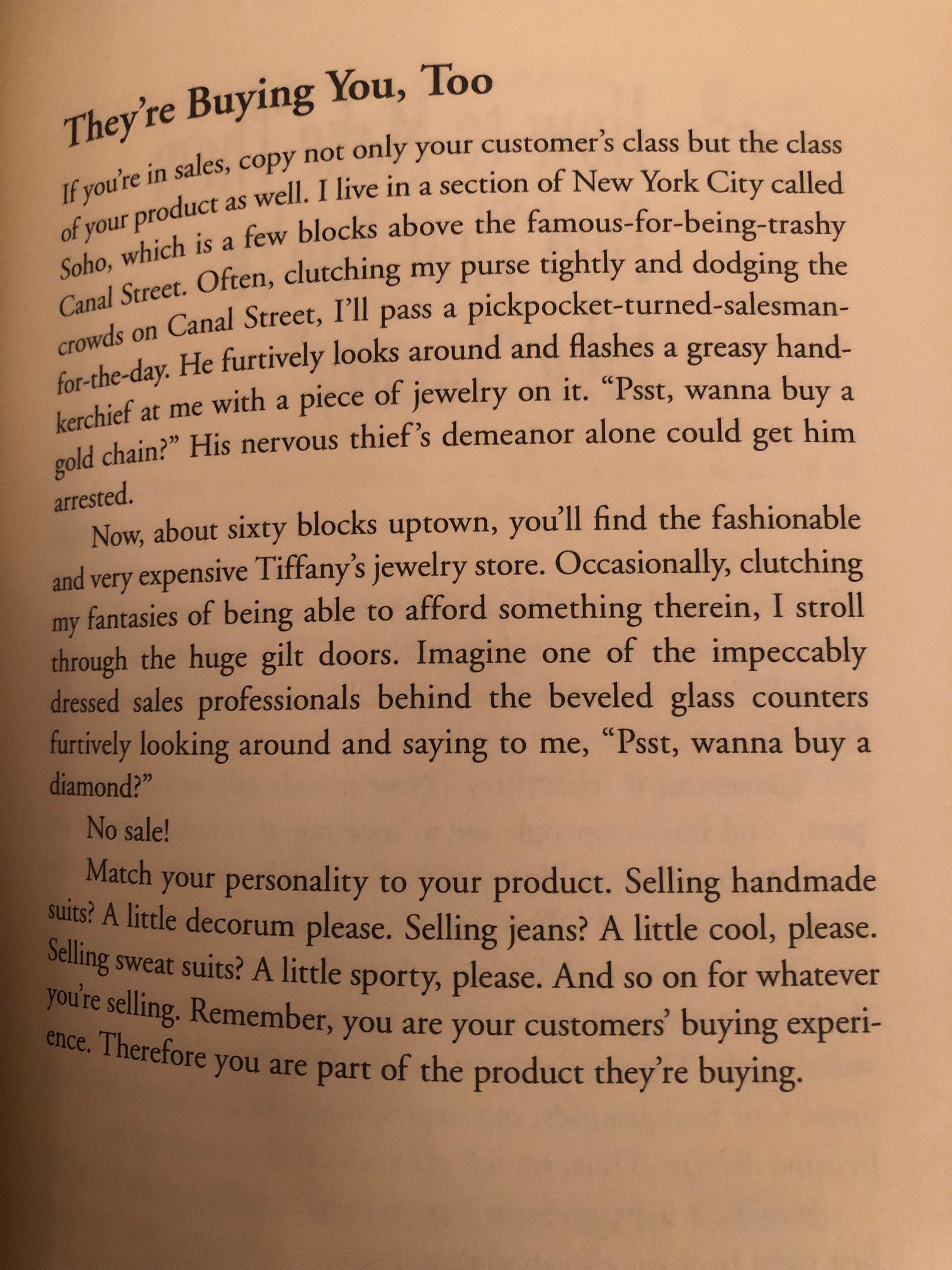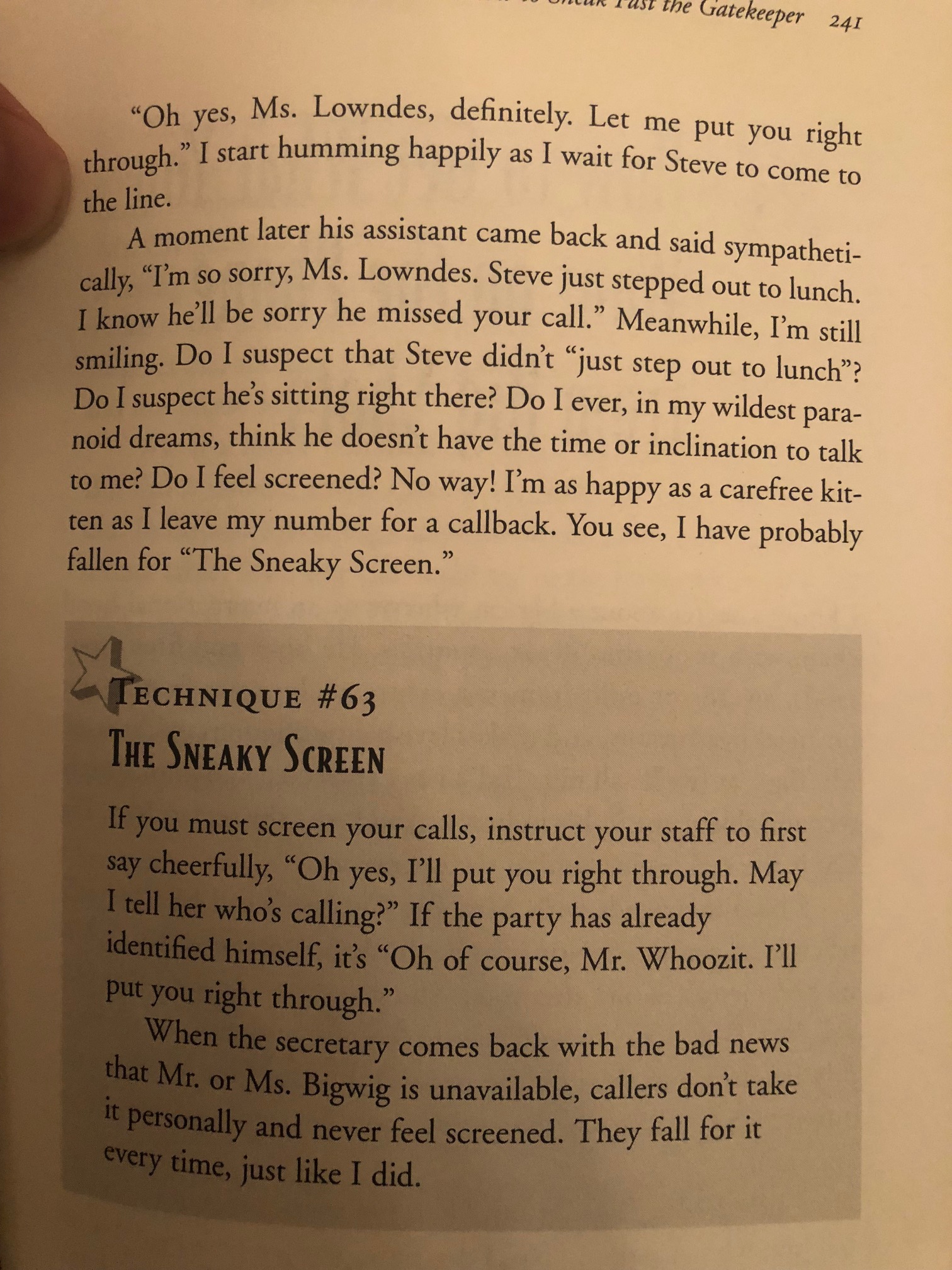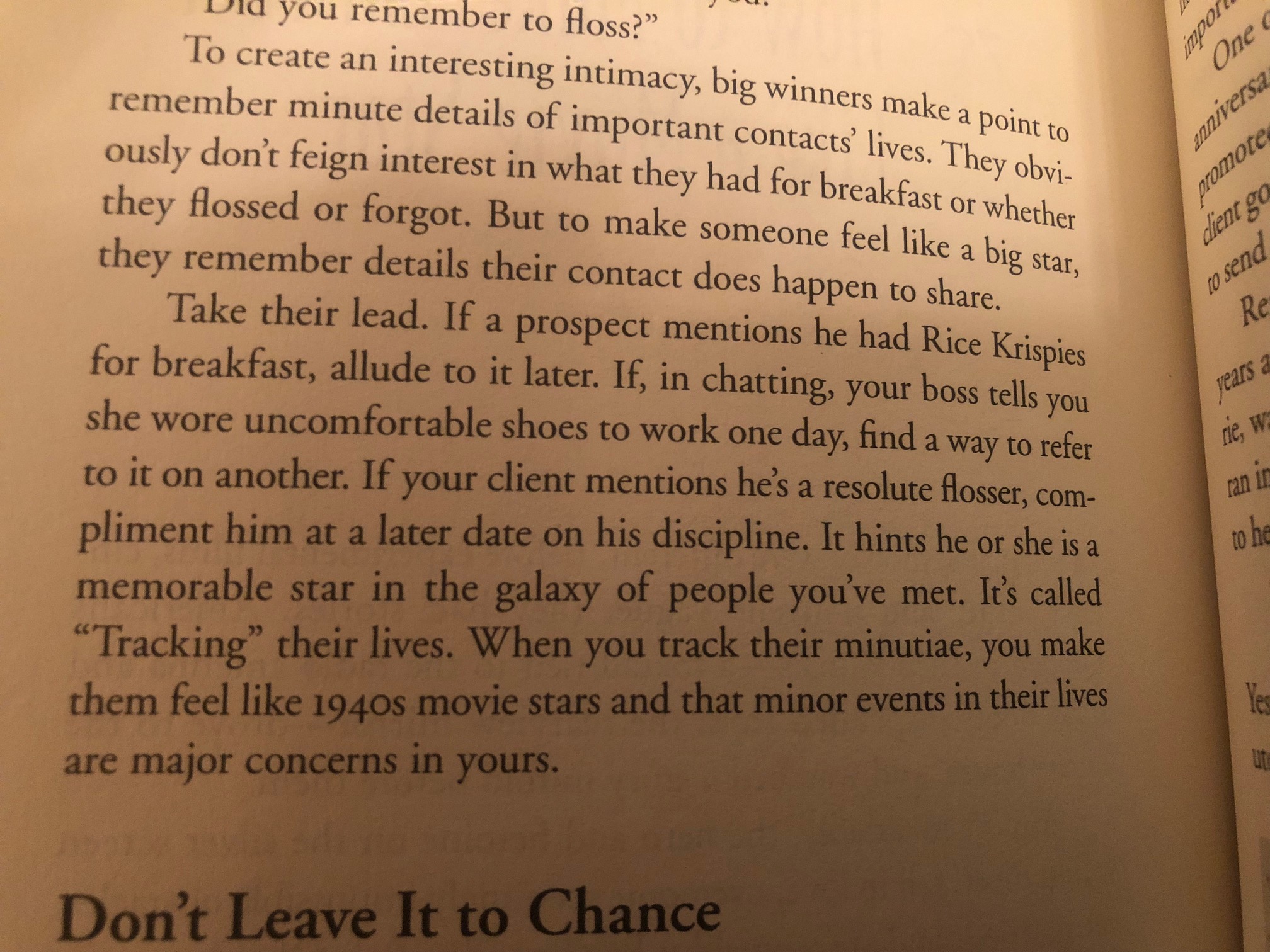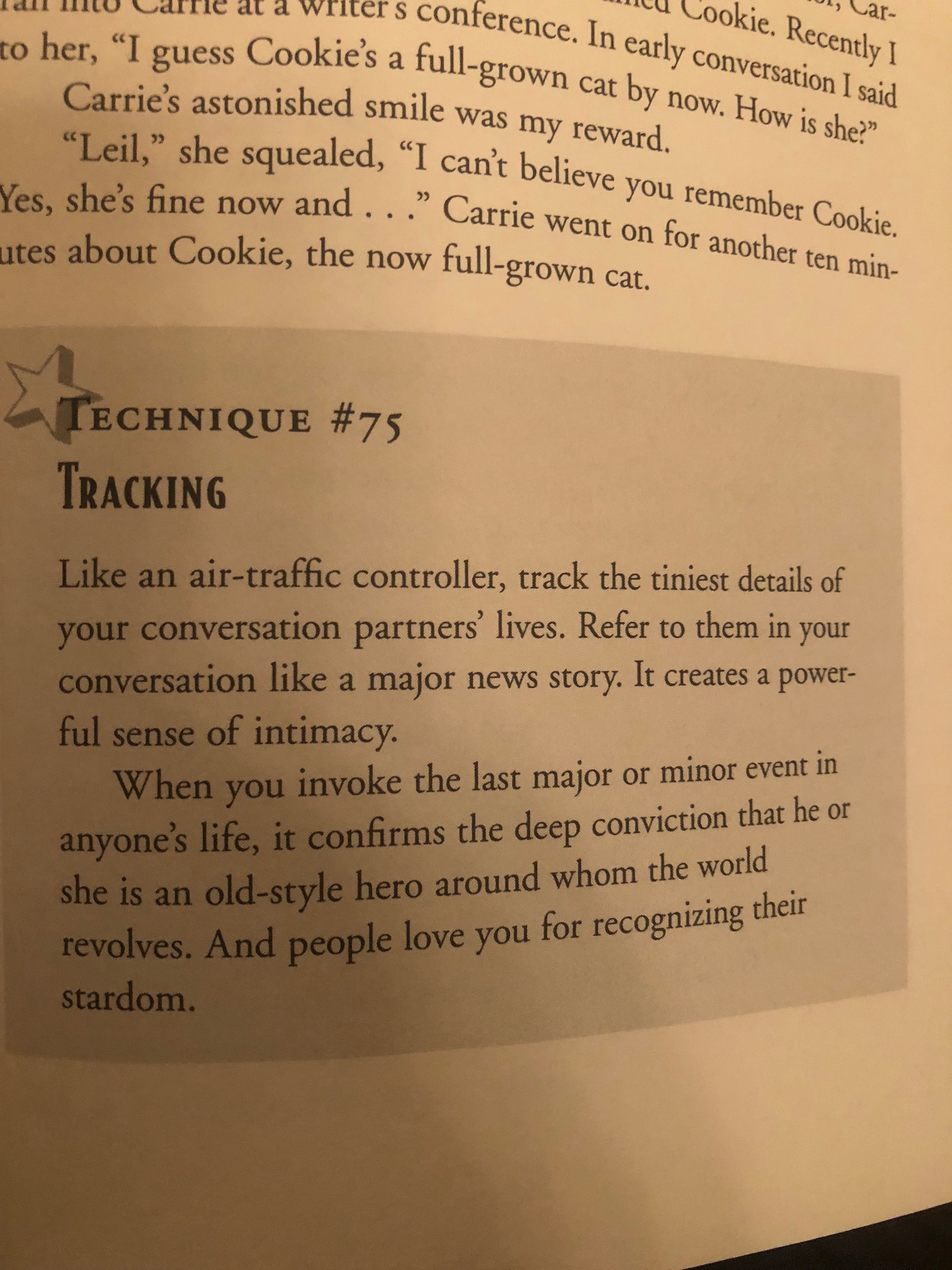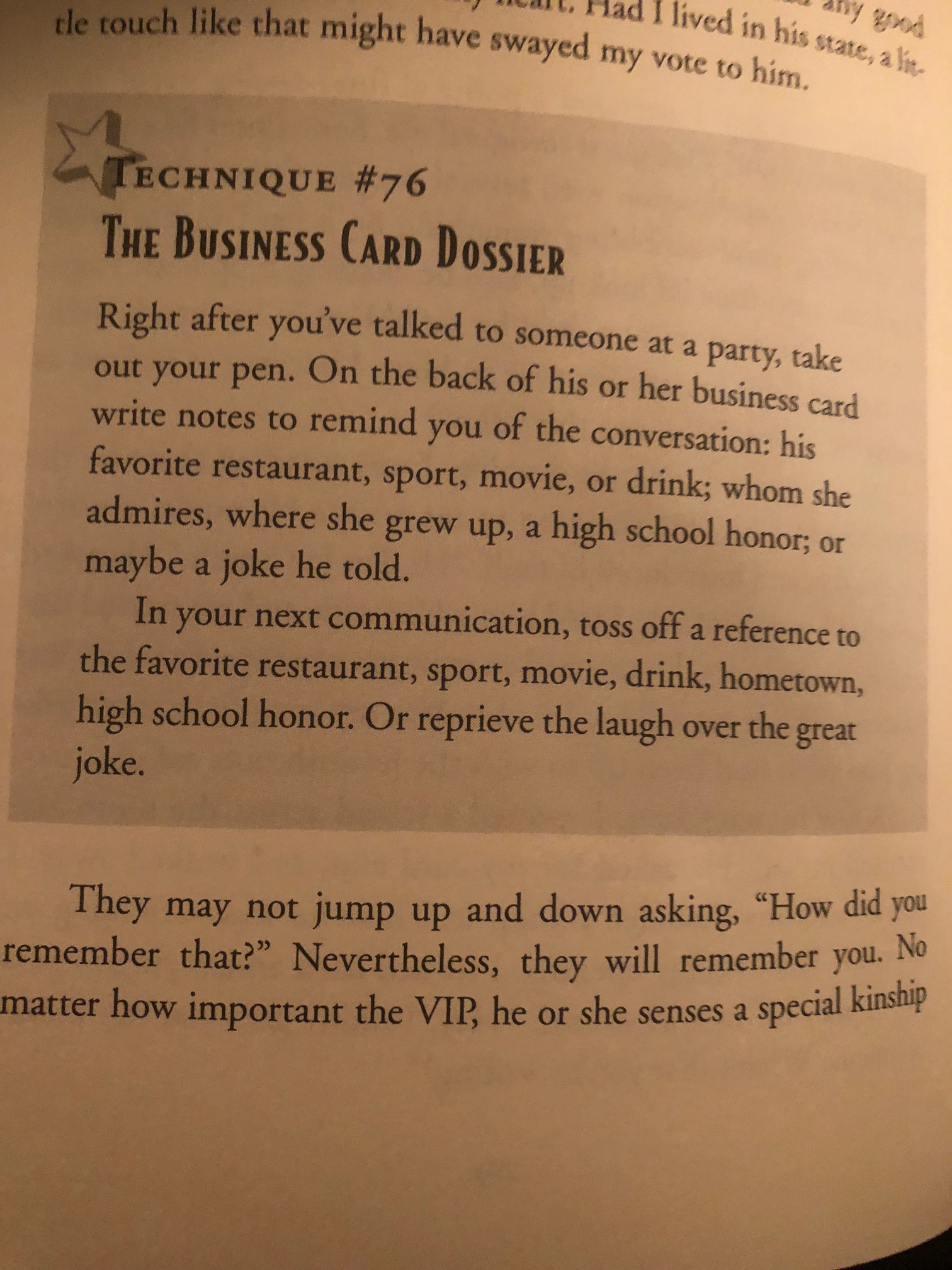This was an excellent book for anyone who wishes to improve their ability to communicate in person with real people, an essential skill in life that many are lacking.
Maxims
– Hold solid eye contact with everyone as much as possible.
– Speak with sincerity and passion
Notes
The way you move is your autobiography.
Part 1: How to intrigue everyone without saying a word
You only have 10 seconds to show your somebody
First nine techniques–come across as a special person without saying anything
Smile big at the right time.
Women who were slower to smile in the corporate world are perceived as more credible.
The flooding smile: when meeting someone, don’t smile right away. Pause for a moment, then let a big flooding smile go over your mouth and eyes. This will give them the impression that the smile is more genuine
Use your eyes–strong eye contact gives the impression of respect and affection. It also gives the impression of being an abstract thinker.
The sticky eyes technique: hold your gaze as much as possible. When talking about personal matters with another men, hold your gaze a little less.
The epoxy see eyes technique: hold gaze on the subject even when another party is speaking. Conveys intense confidence and interest in the subject. Use with caution.
Watch your posture whenever you walk through a doorway. Hold your head high, your shoulders back, and your torso out. This will convey confidence and command respect.
the big baby pit it-turn your full body toward a new acquaintance and smile
Hello old friend-pretend that the person you are meeting is an old friend
When you act as though you like someone, you actually like the more. Respect begets respect.
Don’t fidget. It undermines your credibility.
Read body language cues from your audience
Visualize yourself as a somebody, And it will happen automatically
Part 2: Small Talk
Match your listener’s mood
Use banal, unoriginal conversation topics to lighten the mood and decrease suspicion. But don’t be indifferent. Speak with sincerity and passion
Wear something that will cause people to ask “what is it” this will make you more approachable. Similarly make a habit of noticing things that ask what is it on other
Ask “who is that” to get introduced to someone you want to meet. Try to learn about their interests.
Ask excuse me I couldn’t help but hear… When you were trying to talk to somebody in another conversation.
Never answer “where are you?” from with a one-word response. Think of something interesting about where you are from to tell them.
The same applies to wear what do you do? Always give them a hint as to what type of work you do where you work, etc.
This also applies to your name never introduce somebody to someone else without giving them an idea of who the other person is or what they do. Never just give a naked introduction. Share something interesting about the person.
Be a word detective. Listen to clues and what the other person is telling you for topics of conversation.
Keep the focus of the spot of the conversation (the spotlight on them
Be a parrot. To keep the conversation going, repeat the last 2-3 words the person told you, in an inquisitive way
Ask for an encore. Ask a friend to tell a story to start a good conversation.
Accentuate the positives. Tell people something positive about yourself. Leave the embarrassing story behind.
The latest news. Always be up on the latest news whenever you are going to a party, meeting, or important conversation. This makes for good conversational fodder.
Ask how do you spend most of your time, not what do you do. 25. When answering what do you do, tell them what you actually do that could benefit them or what they might be interested in
Decide which words in your vocabulary you use too much. Grab a thesaurus and look up alternatives. Read the list of alternatives and decide which ones come the most naturally to you.
Look up words you used to often in a thesaurus and find richer, fuller synonyms of those words.
Using rich full words will make you sound more intelligent and creative.
Avoid the quick ” me too.” Let the other person discuss his or her interest before you reveal you share the
Start your sentences with “you.” (i.e. “you look great” vs. “that dress looks great”)
The Exclusive smile: alter your smile slightly during different encounters to seem more genuine.
Never use clichés.
Use catchy phrases.
Avoid euphemisms: anatomy, adjectives etc.
Never make a joke at someone else’s expense.
When you share the same sentiment as your receiver.
When someone asks an unwelcome question, respond to them in an objective matter and repeat the same answer if prodded.
If you have to talk to a celebrity, here’s what you say. “Your work has been an inspiration for me or pleasure for me over the years. Or for the CEO “it is a pleasure to work at your company.”
Try adding something specific to the words “thank you.”
Do something different. Do things that get you out of your comfort zone that will give you things to talk about when the conversation arises.
Learn a few insider opening questions for various industries to sound intelligent in mixed company.
Find out what the hot button issues are in different relevant industries.
Read other people’s industry blogs and publications.
Read about foreign customs before traveling.
Learn industry lingo.
Imitate the style of movement of successful people. As well as those you wish to win over.
Use the specific words that other people use.
Use relevant analogies with your audience.
Don’t just say mhmm when listening
Use anatomically correct empathizers Use
Four levels of intimacy: clichés, opinions, feelings, and the use of Wii. In order to gain intimacy, use we sooner then you might otherwise
Think of special moments you shared with people to make it an inside joke.
Part 5: Instant Rapport
Compliment people behind their back
Pass along good news and complements that other people will want to hear
Implied magnificence: imply good taste or some good quality when you are talking to someone
Accidental adulation: slide a inadvertent complement into your conversation, I.e. you’re too young to remember or wouldn’t be a problem for someone as fit as you.
Killer complement: complement somebody directly only using something specific and personal
Give people small praise when they accomplish something
Make sure you give praise immediately after they do something
When you receive a compliment, boomerang the praise back to them by saying “how nice of you, thanks”
Ask them what they would want written on their tombstone. Later, use that trait as a complement to them.
Part 6: Phone Etiquette
Audible gestures: when speaking over the phone be sure to give affirmation
Use their name frequently when speaking over the phone to invite closeness
When answering the phone, have a neutral tone at first, then be very happy when they say their name.
Sneaky screen: have your gatekeeper first say, “yes, right away,” then come back on the line and give the bad news.
Win over the gatekeeper and/or the spouse
Always ask “did I catch you at a good time?”
Keep your voicemail greeting short and updated
Leave a confident, clear, and credible voice message. Even better, make it entertaining.
A voicemail is like a 10 second audition to get a callback.
Use the pronoun “he or she” when trying to get past the gate keeper. This will make you think that this is normal.
If you hear their phone ringing, be sure to let them answer it.
Remember other countries’ holidays when dealing with people from there.
Record conversations?
Part 7: Parties
Go through the “who what when where why” checklist before going to a party.
Don’t eat at the party. This will make you more approachable.
When you enter a room, pause in the door frame and scan the room.
Be the chooser not the choosy. Choose who you want to talk to at the gathering.
When at a gathering, keep an open posture, including open hands wrists. Stand in a clearing or near a doorway so other people will pass by you.
Tracking: keep track of the last conversation you had with people ask them about their recent trip, their kids, their pets, or whatever else you were talking about with them.
Make notes after conversations with people to remember their favorite things, upcoming events, and things you talked about with them.
Monitor your audience’s body language and adapt your delivery and message accordingly.
Ignore other people’s bloopers and mistakes.
If someone story gets interrupted, remind them to continue after the commotion ends.
For any deal or meeting, always tell the other party what’s in it for them (WIIFM) and what’s in it for you (WIIFY).
When someone asks someone else to pull a favor for you, wait at least a day to get in touch with them.
Don’t cash in on favor reciprocity right away.
83., 84., 85. Avoid hard negotiating or negative business talk at dinners, parties, and during chance encounters.
When someone has something urgent to say, let them empty their tank before you jump in.
Echo the emotion of someone who is upset. Avoid using facts.
If you break someone’s else’s thing, replace it immediately, ideally with something nicer.
If you catch someone messing up, let them save face.
Send a nice email about an employee to their boss to get good service.
Be the first one to clap for or congratulate someone.
Pay attention to the scorecard between you and other people, and don’t overstep your bounds.

